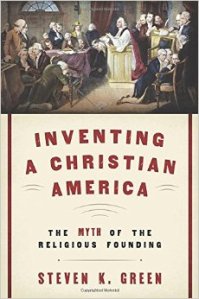
One of the most powerful and unsettling films I’ve ever seen is 2018’s La Casa Lobo, an animated nightmare based on the real-life atrocities of the Pinochet regime in Chile. The film brought the horrors of that period to life within the confines of a single building — the viewer felt trapped in the claustrophobic wolf house.
Chilean author, Nona Fernandez, offers a more macro perspective in her equally powerful and hauntingly poetic book, The Twilight Zone.
To call this a work of fiction would be insufficient. It’s a blend of narrative storytelling, including fiction, journalism and memoir, which brings that period to life greater than reportage alone. During Pinochet’s US-backed military junta, beginning in 1973, thousands of people were disappeared, tortured, sexually abused and often killed. The fates of many of those are still unknown. Their deaths have been reduced to statistics.
The book’s narrator — a documentary filmmaker — attempts to restore their voices by speculating on their ultimate fates and showing them as more than numbers or victims. This is a delicate literary maneuver that, if handled poorly, would come off as pandering or even exploitative. However, Fernandez delivers it with such grace that it feels empowering and restorative.
Her master stroke in this novel, though, is the incorporation of popular culture.
One of the challenges of understanding history is context. It’s easy to distance ourselves from historical events and think of them as separate from our own timeline. However, Pinochet’s atrocities are not ancient history. They occured in my lifetime, and Pinochet himself only died in 2006.
Fernandez uses pop culture to drive home that point, starting with the book’s title — although I prefer the untranslated title, La Dimensión Desconocida. It sounds more appropriately menacing when it doesn’t share the name of my all-time favorite television show.
During the memoir sequences, Fernandez spends her afternoons watching reruns of popular American television shows and juxtaposes this with the atrocities that were being perpetrated against her fellow Chileans at that time.
It’s an unnerving contrast, particularly since I was watching those same reruns in that same timeframe. She takes it further by placing us inside the premiere of the narrator’s documentary film about Pinochet. It was relegated to the smallest screen of a multiplex that had dedicated all of its big rooms to superhero movies in varying degrees of high definition.
The narrator and her mother were the only ones in attendance, and they had trouble hearing the documentary over the surround sound explosions and dramatic overtures rattling the walls.
Literally, popular culture was drowning out the voice of Pinochet’s victims. The Twilight Zone is a good reminder to not let popular culture distract us from present-day atrocities. It’s an engrossing, hard-hitting journey into the dark heart of humanity.
 Hell: The Twisted History of ’70s and ’80s Horror Fiction, a beautiful homage to the glory days of horror publishing.
Hell: The Twisted History of ’70s and ’80s Horror Fiction, a beautiful homage to the glory days of horror publishing.












